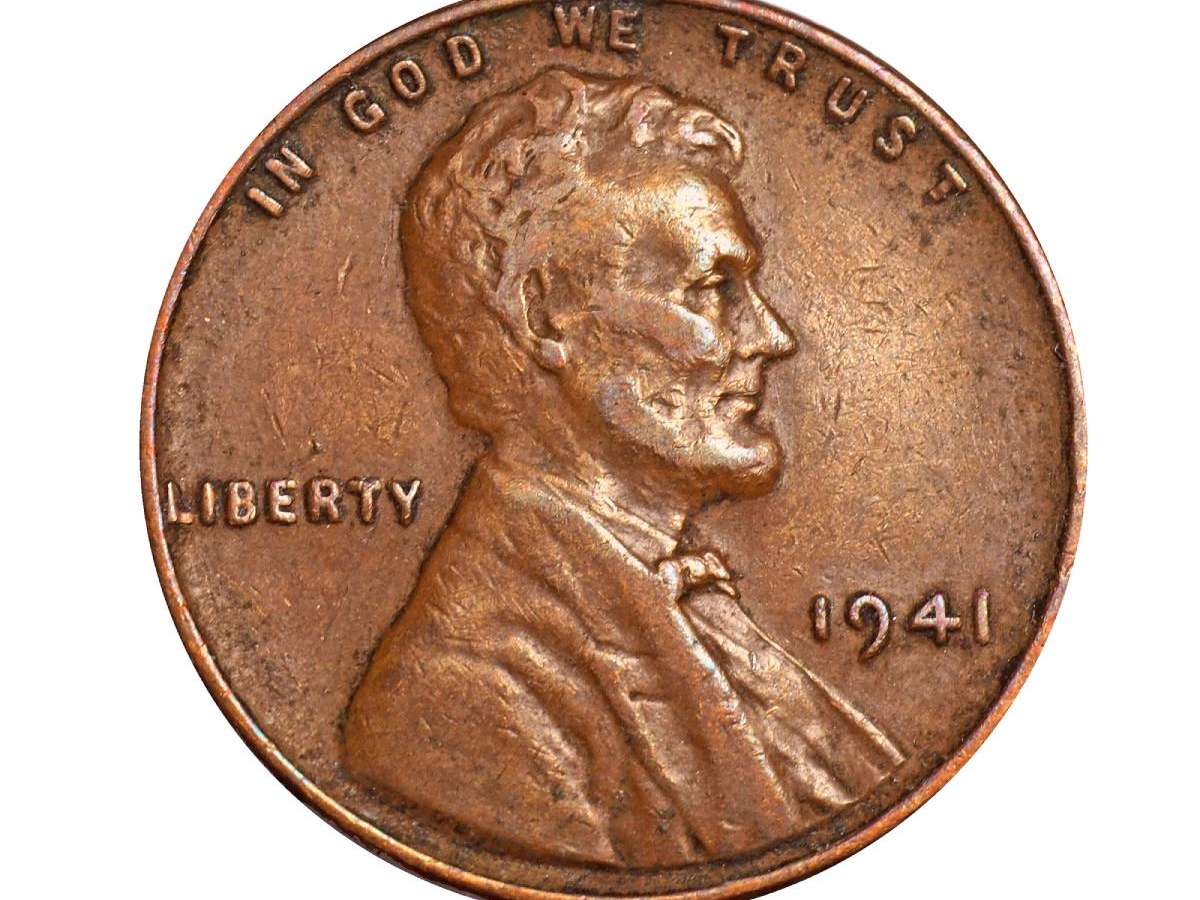Many people have asked the question, “How much do coins weigh?”

The United States has many different types of coins — so naturally there isn’t a single answer, but rather several.
With regard to denomination, the most asked questions we get about coin weights are:
“How much does a quarter weigh?“
And…
“How much does a dime weigh?“
So today I’m going to show you how much all U.S. coins weigh — by denomination.
Can You Weigh Coins To Count Them?
Yes, you can!
In fact, many coin counting machines can accurately calculate a quantity of coins simply by weighing them.
If you want to weigh coins to count them yourself, versus using a coin counter, then your best bet is to buy a coin electronic weighing machine — a digital coin scale.
The Best Coin Scale To Use
A digital coin scale is probably the most convenient method for weighing coins, but an analog coin scale could work, too.
Whichever type of coin scale you decide to use, be sure that it can provide an accurate, unrounded weight down to at least 1/10th of a gram and preferably 1/100th of a gram.
Scales that measure only in whole grams will round off the fractions to the nearest whole gram and can therefore provide incomplete readings — that’s not good when weighing coins, especially those whose metallic variants are distinguished by weight differences of less than 1 gram.
Conventional kitchen scales and postage scales are handy and probably what you most easily have access to. However, they generally provide readouts only to the nearest whole gram — so it’s best to avoid using food scales and stamp scales.
If you want to weigh coins accurately and like a pro, buy a good coin scale! (These are my coin scale recommendations.)
In this video, I’m showing you the 5 things you need to know before weighing coins PLUS my favorite coin scale:
How To Count Coins By Weight
So, you want to group all of your coins together and count them by weighing them, right?
Here’s how to do that:
- Separate all of your coins by denomination.
- Now, within each denomination, separate them by type of metal (pre-1965 90% silver dimes, quarters, and half dollars vs. post-1982 zinc pennies, etc.)
- Next, place all coins of the same denomination and metal type on a coin scale.
- Finally, divide the number in the weight readout by the standard weight of a single coin of that type. (See individual coin weights listed below.)
Voila… The quotient of your calculation should be the number of coins on the scale!
NOTE: It’s important that you realize the accuracy of the quotient (the final number you arrive at with your calculation after division) depends on the scale providing an accurate readout to at least 1/10th of a gram. The U.S. Mint is permitted to strike coins within a certain range or deviation of the standard weight — this difference is known as a “tolerance”. The weight difference based on tolerance depends on the denomination in question, discussed in more detail below. Also, coins that have a lot of wear may weigh less than the standard weight for a coin of that type. Therefore, when you weigh coins to count them, you must take these minor differences into account.
How Much Coins Weigh By Denomination
If you’re going to weigh coins to count them, then their weight in grams is absolutely important to know.
So let’s explore all U.S. coin weights by denomination…
How much does a dollar coin weigh?

U.S. dollar coins were first struck in 1794 and have been made in different sizes and with various metals. Therefore, there is no single standard weight for all silver dollars or other dollar coins made by the United States Mint.
Interested in the various circulating U.S. dollar coin weights?
Here’s how much a dollar coin weighs:
- Silver dollars made from 1794 through 1835 weigh 26.96 grams
- Silver dollars made from 1836 through 1839 weigh 26.73 to 26.96 grams
- Silver dollars made between 1840 and 1970 weigh 26.73 grams
- 40% silver dollars made from 1971 through 1976 weigh 24.59 grams
- Copper-nickel clad dollars made from 1971 through 1978 weigh 22.68 grams
- Copper-nickel clad dollars made from 1979 through 1999 weigh 8.1 grams
- “Golden” dollars made since 2000 weigh 8.1 grams
*Tolerances for silver dollars are .39 grams more or less and .52 grams more or less for copper-nickel clad and 40% silver Eisenhower dollars
How much does a half dollar weigh?

Like silver dollars, the U.S. half dollar coin has been minted since 1794 — and there have been some changes to this denomination over the years.
Want to know how much a circulating 50-cent coin weighs?
Here’s how much a half dollar weighs:
- Half dollars made from 1794 through 1836 (larger size of 32.5 millimeters) weigh 13.48 grams
- Half dollars made from 1836 through 1839 (smaller size of 30 millimeters) weigh 13.36 grams
- Half dollars made from 1839 through 1853 (no arrows at the date) weigh 13.36 grams
- Half dollars made from 1853 through 1873, (1853-55 with arrows at the date) weigh 12.44 grams
- Half dollars made from 1873 through 1964, (1873-74 with arrows at the date) weigh 12.5 grams
- 40% silver half dollars made from 1965 to 1970 AND the 1976-S half dollar weigh 11.5 grams
- Copper-nickel clad half dollars made since 1971 weigh 11.34 grams
*Tolerances for half dollars are .26 grams more or less
How much does a quarter weigh?
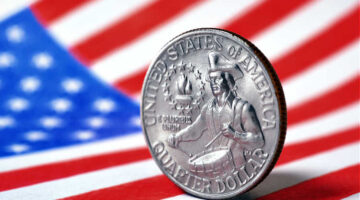
The U.S. Mint has been making quarters since 1796, and there have been changes to the weight of the denomination since the first examples of this workhorse coin were made back in the late 18th century.
Interested in the standard weights for circulating U.S. quarters?
Here’s how much a quarter weighs:
- Quarters made from 1796 through 1838 weigh 6.74 grams
- Quarters made from 1838 through 1853 with the Liberty Seated design (no arrows at the date) weigh 6.68 grams
- Quarters made from 1853 through 1873 (1853-55 with arrows at the date) weigh 6.22 grams
- Quarters made from 1873 through 1964 (1873-74 with arrows at the date) weigh 6.25 grams
- Copper-nickel quarters made since 1965 weigh 5.67 grams
- 40% silver Bicentennial quarters (1976-S) weigh 5.75 grams
*Tolerances for quarters are .19 grams more or less
How much does a dime weigh?
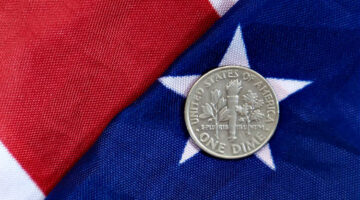
Dimes have been made in the United States since 1796, and these coins have been made in various weights.
Wondering about the standard weights for circulating U.S. dimes?
Here’s how much a dime weighs:
- Dimes made from 1796 through 1808 weigh 2.7 grams
- Dimes made from 1809 through 1853 (with no arrows at the date) weigh 2.67 grams
- Dimes made from 1853 through 1873 (1853-55 with arrows at the date) weigh 2.49 grams
- Dimes made from 1873 through 1964 (1873-74 with arrows at the date) weigh 2.5 grams
- Dimes made since 1965 weigh 2.27 grams
*Tolerances for dimes are .09 grams more or less
How much does a nickel weigh?
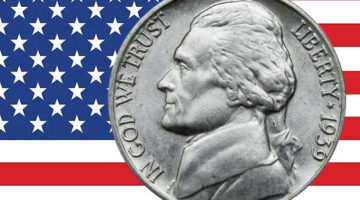
The “nickel” is really just a shorthand term for the U.S. five-cent coin — which has technically been in production since 1794. Originally, it was a small silver coin known as a half dime (or half disme).
The nickel, as we know it today, is made from a copper-nickel alloy — it debuted in 1866.
With the lone exception of silver war nickels that were made from a 35% silver alloy during the period spanning 1942 through 1945 to save nickel for making World War II artillery, U.S. nickels contain a 75% copper, 25% nickel composition. However, even with the metallic changes during World War II, the weight of the coin remained unchanged.
Here’s how much a nickel weighs:
- All U.S. nickels made since 1866 weigh 5 grams
*Tolerances for nickels are .19 grams more or less
How much does a penny weigh?

The iconic penny, or one-cent coin as this denomination is officially known in the United States, has been an American staple since 1793.
The penny has shrunk in size over the years. Once nearly the size of a modern-day half dollar, the penny was initially reduced to its current diameter of 19 millimeters in 1856.
The metallic composition of the “small” cent has also changed from copper-nickel to bronze, and then onto copper-plated zinc as we see today.
Here’s how much a penny weighs:
- Pennies from 1856 through 1864 (copper-nickel pennies) weigh 4.67 grams
- Pennies from 1864 through 1982 with the EXCEPTION of 1943 weigh 3.11 grams
- 1943 pennies (made from zinc-plated steel) weigh 2.7 grams
- Copper-coated zinc pennies made since 1982 weigh 2.5 grams
*Tolerances for pennies are .13 grams from 1856 through 1971, .12 grams from 1972 through 1982, and .10 grams since 1982
Other Questions About How Much Coins Weigh
How much does a silver coin weigh? How much do gold coins weigh?

We’ve already listed silver coin weights in the dime, quarter, half dollar, and dollar coin weight sections above.
Hopefully, that info answers your questions about how much silver coins weigh.
But what about the weight of gold coins?
Let’s look at the weights of some of the most common types of classic U.S. gold coins:
- $2.50 gold coins made from 1834 to 1929 weigh 4.18 grams
- $5 gold coins made from 1839 to 1929 weigh 8.359 grams
- $10 gold coins made from 1838 to 1933 weigh 16.718 grams
- $20 gold coins made from 1849 to 1933 weigh 33.436 grams
What coin weighs a gram?
There aren’t any U.S. coins that weigh precisely 1 gram. But there is a common Chinese coin that does. The Chinese yen coin weighs 1 gram to a tee!
Specifically with regard to United States coins, there’s always the chance that a very well-worn example of a pre-1982 U.S. penny could weigh a little over 1 gram.
Here’s why…
U.S. pennies minted before 1982 were made from 95% copper and 5% zinc, and they weighed 3.11 grams when they were brand new. The amount of weight loss due to wear typically ranges from 10% to 50% for circulated pennies — meaning that a well-worn penny from circulation could weigh as little as 1.55 grams.
What coin weighs 2 grams?
If you’re looking for coins that weigh 2 grams, check out the reform coinage of Chile. A 1975 1 centavo coin made from aluminum weighs exactly 2 grams!
If you’re talking about U.S. coins, then the answer could be a well worn nickel.
Pre-1960 nickels were made of 75% copper and 25% nickel, and they weighed 2.5 grams when they were brand new. Some well-worn examples of these nickels from circulation today could weigh closer to 2 grams.
Other than that, certain commemorative or collector’s coins issued by the U.S. Mint might have unique compositions and weights closer to 2 grams. However, these wouldn’t be considered “regular” circulating coins.
What coin weighs 200 grams?
You’re not going to find many coins, medals, or much of anything else in the numismatic arena that individually weighs 200 grams — that’s 7.05 ounces, or nearly half a pound!
But, there is a handy coin you can find in pocket change that, in multiples, easily adds up to 200 grams. That’s the nickel, which — again — weighs 5 grams. It takes 40 nickels to equal 200 grams.
You know what else 40 nickels adds up to? A $2 roll of nickels. And that’s a great segue into this next question about weighing coins in rolls…
How much do rolled coins weigh?
To answer this question, you need to know how many coins come in a standard bank roll:
- A roll of pennies contains 50 coins
- A roll of nickels contains 40 coins
- A roll of dimes contains 50 coins
- A roll of quarters contains 40 coins
- A roll of half dollars contains 20 coins
- A roll of large-size dollars contains 20 coins
- A roll of small-size dollars contains 25 coins
As you’ve already learned, each denomination of coin has been produced in different metals and weights over the years. So if you want to find out how much rolled coins weigh, then you’ll need to:
- Know what period or generation of coin is inside the roll.
OR
- Resort to using coin weight averages — not an exact number, but close enough.
Using the coin weights listed above, the number of coins in each roll by denomination, and the unique weight of a paper coin wrapper for each denomination, here’s how much a roll of coins weighs — by denomination:
- Pre-1982 pennies weigh 3.11 grams each x 50 pennies per roll = 155.5 grams unwrapped. When you add an empty penny wrapper’s weight (between 0.1 to 0.2 grams), a roll of these pennies weighs 155.6 to 155.7 grams wrapped.
- Post-1982 pennies weigh 2.5 grams each x 50 = 125 grams unwrapped. With the empty penny wrapper’s weight, a roll of these pennies weighs 125.1 to 125.2 grams wrapped.
- All U.S. nickels weigh 5 grams each x 40 nickels per roll = 200 grams unwrapped. When you add the empty nickel wrapper’s weight (between 0.15 to 0.25 grams), a roll of nickels weighs 200.15 to 200.25 grams wrapped.
You can perform those same types of calculations with the other denominations (dimes, quarters, half dollars, and dollar coins) using these weights for the empty coin wrappers:
- Empty dime coin wrappers made of paper weigh between 0.15 to 0.2 grams
- Empty quarter coin wrappers made of paper weigh between 0.25 and 0.35 grams
- Empty half dollar coin wrappers made of paper weigh between 0.3 to 0.4 grams
- Empty dollar coin wrappers made of paper weigh between 0.25 – 0.35 grams
Do banks weigh rolled coins?
Some do. But even banks that weigh rolled coins may do so only as a secondary means of verifying the number of coins in a roll.
For example, a roll of 50 pennies that are all copper-coated zinc coins made since late 1982 will weigh some 30 grams less than a roll of 50 bronze pennies struck prior to 1983.
Therefore, weighing rolls might provide some rough idea as to the number of coins within — but because of differences in weight caused by tolerances, heavy coin wear, various metallic compositions, and other factors, weighing rolls of coins can be tricky business.
Like this post? Save it to read again later… or share with others on Pinterest!
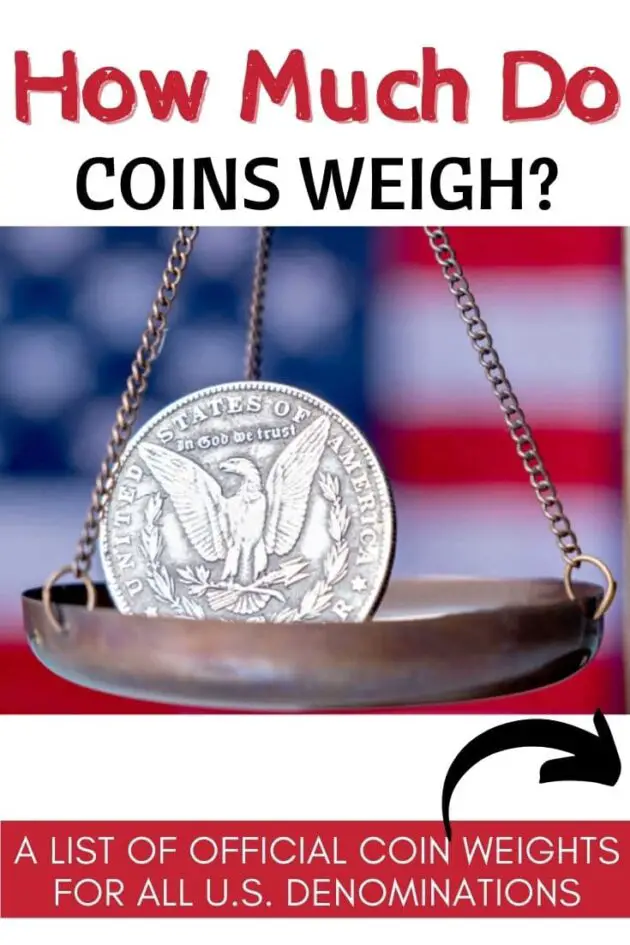
I’m the Coin Editor here at TheFunTimesGuide. My love for coins began when I was 11 years old. I primarily collect and study U.S. coins produced during the 20th century.
I’m a member of the American Numismatic Association (ANA) and the Numismatic Literary Guild (NLG) and have won multiple awards from the NLG for my work as a coin journalist. I’m also the editor at the Florida United Numismatists Club (FUN Topics magazine), and author of Images of America: The United States Mint in Philadelphia (a book that explores the colorful history of the Philadelphia Mint). I’ve contributed hundreds of articles for various coin publications including COINage, The Numismatist, Numismatic News, Coin Dealer Newsletter, Coin Values, and CoinWeek.
I’ve authored nearly 1,000 articles here at The Fun Times Guide to Coins (many of them with over 50K shares), and I welcome your coin questions in the comments below!




